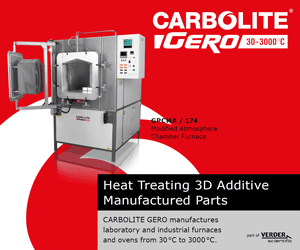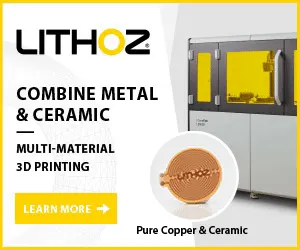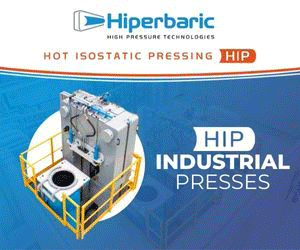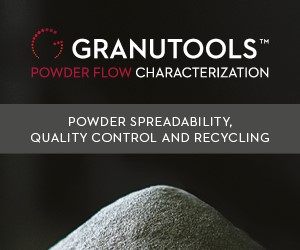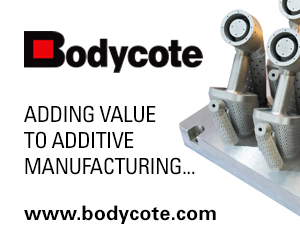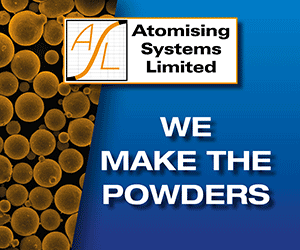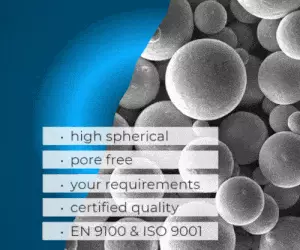Metal Additive Manufacturing, Vol. 7 No. 3 Autumn 2021
Prefer a PDF download? Click here
In addition to the latest industry news, this 216-page issue of Metal Additive Manufacturing magazine includes the following exclusive features:
Metal AM in hydraulics: Aidro’s Valeria Tirelli on opportunities, applications, and joining Desktop Metal
A technology such as Additive Manufacturing relies heavily on industry champions to drive awareness, promoting the capabilities and potential of the process within their circle of influence.
In the hydraulics industry, AM has no greater champion than Aidro srl’s Valeria Tirelli, whose wide-reaching advocacy belies the company’s modest size. Luca van der Heide interviewed Tirelli for Metal AM magazine and discussed the company’s story, why the hydraulics sector is so well suited to AM, and, of course, the recent acquisition of Aidro by Desktop Metal.
| Get PDF | | | Read online |
I want to break free: The journey towards reducing or eliminating support structures
Support structures have been there for us since the beginning of AM, anchoring us to a firm foundation and taking the heat when things get intense. But they also bring with them baggage that is now holding us back, blocking channels and taking up valuable time and materials. Is it time to break free?
In this article, Jennifer Coyne and John Barnes, of The Barnes Global Advisors, explore our journey so far with support structures, their advantages and disadvantages, and consider the opportunities and impact of the shift towards ‘support free’ strategies. Through three case studies, the cost and productivity of conventional and ‘support free’ production are compared.
| Get PDF | | | Read online |
Simufact Additive: Accelerating the Metal Binder Jetting workflow with sintering simulation
The ability to ‘design out’ distortion during sintering is seen as key to enabling the faster commercialisation of metal Binder Jetting (BJT). The Simufact Additive software platform, now on the third release of its BJT sintering module, is able to accurately simulate the sintering process, predicting shrinkage, slumping and friction-related distortion, either with or without ‘live’ and ‘ceramic’ setters, resulting in a downloadable ‘compensated’ component geometry to be fed directly to the AM machine.
In this article, Jeff Robertson explores through case studies how The ExOne Company has been using the software in its AM adoption and R&D centres to optimise customer parts for sintering.
| Get PDF | | | Read online |
Metal powder characterisation for Additive Manufacturing: Beyond state-of-the-art standards
The control of powder feedstock characteristics is essential in metal Additive Manufacturing in order to guarantee the quality of built parts and reduce production costs. However, powder behaviour is influenced by a large number of particle properties, along with environmental conditions which can modify these properties.
In this article, Granutools’ Dr Aurélien Neveu reviews some of the current standards applicable to powder feedstock characterisation, and highlights how to make such procedures more robust, repeatable and meaningful for end-users with regards to real AM powders and process conditions.
| Get PDF | | | Read online |
A look at the future: What does the next decade hold for metal Additive Manufacturing?
Machine price and size, maintenance costs, production speed, safety, materials, metallurgy and quality – these are just some of the factors that will play a role in driving the development of metal AM over the next ten years.
Concerns, such as repeatability, post-processing and ease of use, will determine whether the technology can fulfil the potential it promises. One thing is clear: many factors must improve before metal AM can become a true mainstream production technology.
Olaf Diegel and Terry Wohlers, Wohlers Associates, draw on their expertise and experience to predict what the next decade may look like for metal Additive Manufacturing.
| Get PDF | | | Read online |
Reducing residual stress with 500°C build chamber preheating for ‘first time right’ PBF-LB
According to Germany’s Trumpf GmbH + Co. KG, preheating the substrate plate in Laser Beam Powder Bed Fusion (PBF-LB) to 500°C brings significant advantages in serial production: complex parts are more likely to be built successfully on the first try, design freedom increases, there is little residual stress and no cracks – and, for the first time, high-carbon alloy parts can be built reliably, without cracks, to a density comparable with their conventionally produced counterparts.
Here, the company shares the results of tests demonstrating the advantages of 500°C preheating, and introduces the technology making it possible for manufacturers to integrate this step into their PBF workflow, and reap the benefits.
| Get PDF | | | Read online |
Separating metal AM parts from the build plate – an underestimated challenge
Within the Additive Manufacturing workflow, it is easy to underestimate the challenge of removing parts from a build plate. As GF Machining Solutions’ Dogan Basic explains, in Laser Beam Powder Bed Fusion (PBF-LB) the wrong choice of equipment can lead to higher costs, longer build times and even part breakages.
In response to this challenge, the company developed a solution designed specifically for PBF-LB build plate removal: the AgieCharmilles CUT AM 500. Here, Basic introduces the features and benefits that the CUT AM 500 brings to the industry.
| Get PDF | | | Read online |
How X-ray Computed Tomography is helping an AM service bureau to improve predictive-model based qualification
As metal Additive Manufacturing continues to grow as a technology for the production of critical end-use parts for the most demanding of applications, X-ray Computed Tomography (CT) remains an unrivalled non-destructive testing tool.
Here, Yxlon’s Nathan Serafino and Dirk Steiner report on how Materials Resources LLC, an additive metals research and manufacturing company, defence contractor, and ‘fast factory’, is going a step further, using the technology to improve predictive-model based qualification processes as well as to calibrate in-process monitoring.
| Get PDF | | | Read online |






